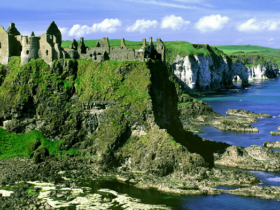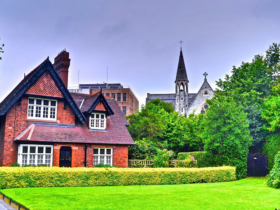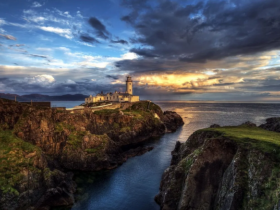It can be a Central African Republic and is not Very Popular Among Tourists, But Its Very Attractive TOS Exotic Forests, Colorful Waterfalls, Delightful National Parks And Rich Arnti STIC INHERITANCE.
The Attractions of the Central African Republic
Built on a Rock, Near the Ubangi River, The Capital of the Central African Republic, The City of Bange, Hidden in the Shadow of Tropical Greeenery and Has Many Modern Buildings. The Colorful Central Square, The Boganda Museum (Boganda), The School of Arts and Crafts, The Cathedral and Mission of ST. Paul IS Interesting Here. 100 Kilometers from the Capital, In Lobaye (Lobaye), National Tribes Live, Which Cultivate Coffee and Live In Small Huts Constructed from Lian.
The Magnificent Attractions of the Central African Republic Are: Boali Falls, Which Has a Height of 50 Meters and Width of 250 Meters, As Well as Bouar Mounds, Which Are More 200 Eye ARS OLD. In Bangassou, On the Border with the Democratic Republic of Congo, There is Another Waterfall – Kembe (Kotto). In the Dry Season, On a Rented Car, You can visit the conside of National Park. The Most Fascinating Are: Bamingui-Bangoran Park, Manovo-GounDA Park and Dzanga-Sangha Park).
National Cuisine of the Central African Republic
The Main Product of the Central African Republic is a Manioca, Which, Before use, is Crushed and Turned Into Flour Called Gozo. A Solid Dungh is Made from It, Which is Served, Most Offten with Sauces. Another Dish is Called Hgunja and it is Prepart from Maniac Leaves. Most SaUCES ARE MADE of PEANUTS, To Which Proteins and Aromatic Spitses are AdDED. By Tradition, Each NATIVE EATS from A Common Dish, Hands.
Weather in the Central African Republic
Traditionally, The Temperatures of the North of the Central African Republic Are Higher, By 2-4 Degrees than in the South. In the Summer in the North, Thermeter Can Show Up To 35 Degrees, and in Winter – Up To 25 Degrees. Night Winter Temperatures Can BE Significantly Lower. The Rain Season Takes The Period From July to September, When It Can Fall Up to 1.500 Millimeters, December and January Arest Months – There Is No Rain Douring Thuis ThiS all.









